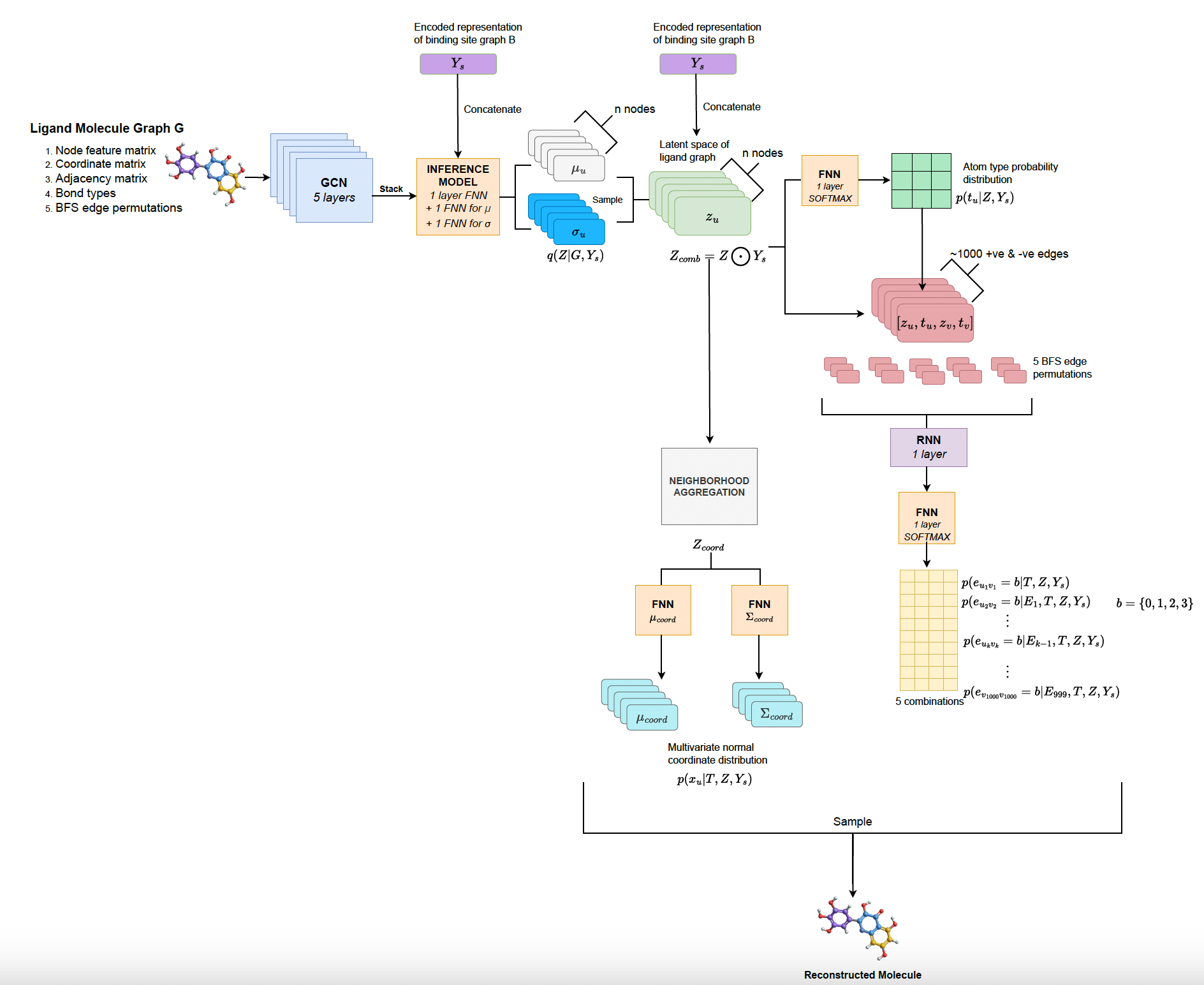Prashant Govindarajan
Hello and வணக்கம்! I am a fourth-year Computer Engineering PhD candidate at Mila-Quebec AI Institute and Polytechnique Montréal (engineering school of UdéM), working under Sarath Chandar. I am keenly interested in reinforcement learning and large language models for scientific discovery and beyond. In collaboration with Intel, I developed offline and online reinforcement learning methods for crystalline material design using first-principles. I also worked with Ansys on LLMs for automating Computer-Aided Design (CAD). My research is supported by the PBEEE scholarship for international students.
I was previously a dual degree student at the Indian Institute of Technology Madras, where I worked under Balaraman Ravindran and Karthik Raman on target-specific drug design. Besides academics, I like playing chess, frisbee, traveling, and cooking. Lately, I’ve been learning to snowboard and play the flute. Feel free to reach out if you’d like to chat about research or anything beyond 😁! I’m always eager to learn more about crystallography, DFT, and solid-state physics, and would love to exchange ideas, especially on the RL aspects of my work!
I am actively seeking research internships in the areas of LLMs, reinforcement learning, and AI for Science.
Publications
- Woo, Kowen, Prashant Govindarajan, and Sarath Chandar. Benchmarking Machine Learning Potentials for Crystal Structure Relaxation. In NeurIPS 2025 AI for Science Workshop.
- Govindarajan, Prashant*, Davide Baldelli*, Jay Pathak, Quentin Fournier, and Sarath Chandar. CADmium: Fine-Tuning Code Language Models for Text-Driven Sequential CAD Design. arXiv preprint arXiv:2507.09792 (2025).
- Govindarajan, Prashant, Mathieu Reymond, Antoine Clavaud, Mariano Phielipp, Santiago Miret, and Sarath Chandar. CrystalGym: A New Benchmark for Materials Discovery Using Reinforcement Learning. In AI for Accelerated Materials Design-ICLR 2025.
- Govindarajan, Prashant, Mathieu Reymond, Santiago Miret, Mariano Phielipp, and Sarath Chandar. Crystal Design Amidst Noisy DFT Signals: A Reinforcement Learning Approach. In AI for Accelerated Materials Design-NeurIPS 2024.
- Govindarajan, Prashant, Mathieu Reymond, Santiago Miret, Antoine Clavaud, Mariano Phielipp, and Sarath Chandar. A Reinforcement Learning Pipeline for Band Gap-directed Crystal Generation. In AI for Accelerated Materials Design-Vienna 2024.
- Govindarajan, Prashant, Santiago Miret, Jarrid Rector-Brooks, Mariano Phielipp, Janarthanan Rajendran, and Sarath Chandar. Learning Conditional Policies for Crystal Design Using Offline Reinforcement Learning. Digital Discovery (2024).
- Govindarajan, Prashant, Santiago Miret, Jarrid Rector-Brooks, Mariano Phielipp, Janarthanan Rajendran, and Sarath Chandar. Behavioral Cloning for Crystal Design.” In Workshop on Machine Learning for Materials, ICLR 2023.
News
- October 2025 See me at the COLM conference!
- August 2025 Teaching Assistant for INF8245AE, Machine Learning by Sarath Chandar
- July 2025 Released CADmium paper and dataset!
- June 2025 Selected for FRQNT merit scholarship for international students (PBEEE)
- April 2025 CrystalGym: A New Benchmark for Materials Discovery Using Reinforcement Learning selected for a Spotlight at AI4Mat, ICLR 2025!
- December 2024 Crystal Design Amidst Noisy DFT Signals: A Reinforcement Learning Approach accepted at AI4Mat 2024 (NeurIPS 2024)
- July 2024 A Reinforcement Learning Pipeline for Band Gap-directed Crystal Generation accepted at AI4Mat 2024 (Vienna)
- May 2024 Attended Sciencepreneurship Summer School at EPFL, Switzerland, and our team won the first place in the pitch competition!
- April 2024 Passed my quals! I’m a PhD Candidate now!
- March 2024 Organizing MoML Conference (summer edition) for the second time (MoML 2024)!
- January 2024 Learning Conditional Policies for Crystal Design Using Offline Reinforcement Learning accepted for the AI4Mat-2023 Digital Discovery Special Issue!
- December 2023 Presented poster at AI4Mat Workshop at NeurIPS 2023, New Orleans
- November 2023 Volunteer for Graduate Application Assistance Program for Underrepresented Students in AI
- November 2023 Presented poster at MoML 2023, MIT
- August 2023 Teaching assistant for INF8250AE, Reinforcement Learning by Sarath Chandar
- March 2023 Behavioral Cloning for Crystal Design accepted as workshop paper at ML4Materials workshop, ICLR 2023
- February 2023 Organizer of Molecular ML Conference (MoML 2023) happening on May 29, 2023
- August 2022 Started PhD in Computer Engineering at Mila and Polytechnique Montreal, advised by Sarath Chandar
- July 2022 Graduated from IIT Madras with a dual degree in Biological Sciences and Data Science
- June 2022 Defended M.Tech thesis titled “Graph generative models for binding site-specific molecule generation”
- May 2022 “Generating drug-like molecules from gene expression signatures using transformer model” accepted as poster at MLCSB-COSI, ISMB 2022
- April 2022 Presented poster for thesis work at RBCDSAI Annual Research Showcase
- April 2022 Selected for international travel bursary to attend Amii’s AI Week 2022
- January 2020 Selected for the Khorana Program for Scholars to undertake research internship in the USA
Projects
Fine-tuning LLMs for automating Computer-aided Designing
With Ansys, we developed CADmium, a new open-source dataset consisting of natural language descriptions for 170k+ 3D CAD objects. We propose a novel LLM fine-tuning workflow with code LLMs, and augment existing evaluation schemes with new metrics. 
Reinforcement Learning for Crystal Structure Design
Currently exploring offline and online reinforcement learning methods for learning a policy for sequentially designing crystal structures. 
Graph generative models for binding site-specific molecule generation
Designing novel deep graph generative model for generating new ligand molecules that can bind to a given target receptor binding site. 
Analysis of drug response and gene expression data of AML cells
Computational methods to identify drug-gene correlations and molecules that can induce leukemic cell maturation. 
Incorporating Geometry into Score-Based Model for Crystal Structure Design
Two ways to incorporate crystal symmetry information as an inductive bias into a generative model for crystal structure design. 
Analyzing the effects of visual representations in visual navigation tasks
Two ways for encoding visual inputs for navigation task using RL – pretraining a contrastive learning-based SimCLR model and VAE-based generative approach. 
Deep generative models for single-cell gene expression analysis
Evaluated state-of-the-art unsupervised deep learning techniques including variational autoencoders for single-cell gene expression data analysis. 
Generating drug-like molecules from gene expression signatures using transformer
Designed an attention-based transformer model for de novo generation of drug-like molecules that can induce a desired transcriptomic profile. Accepted as poster at MLCSB COSI, ISMB 2022. 
Parallel analyses of canonic polyadic tensor decomposition algorithm
CPU- and GPU-level parallelization of tensor decomposition algorithm using OpenMP and OpenACC. 
